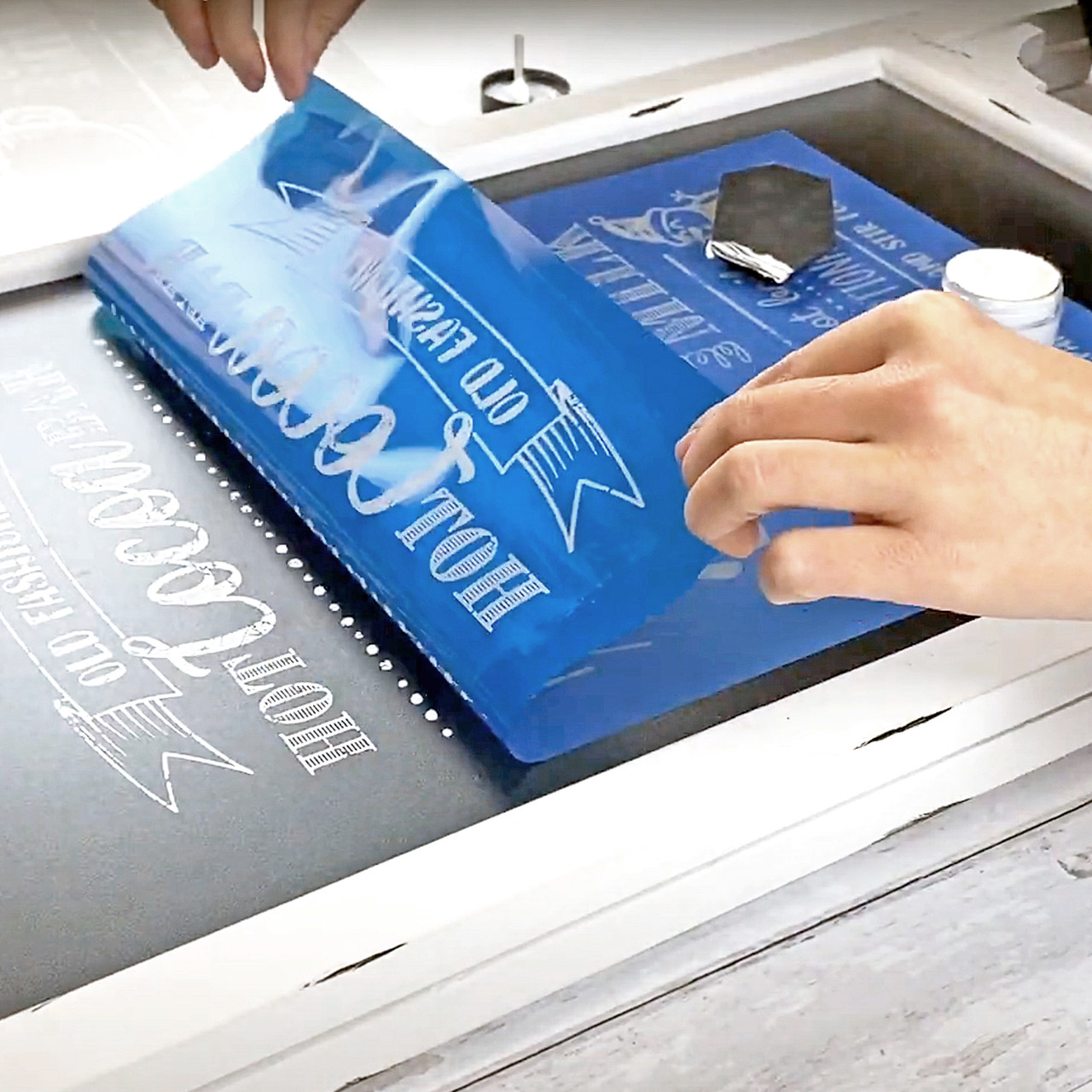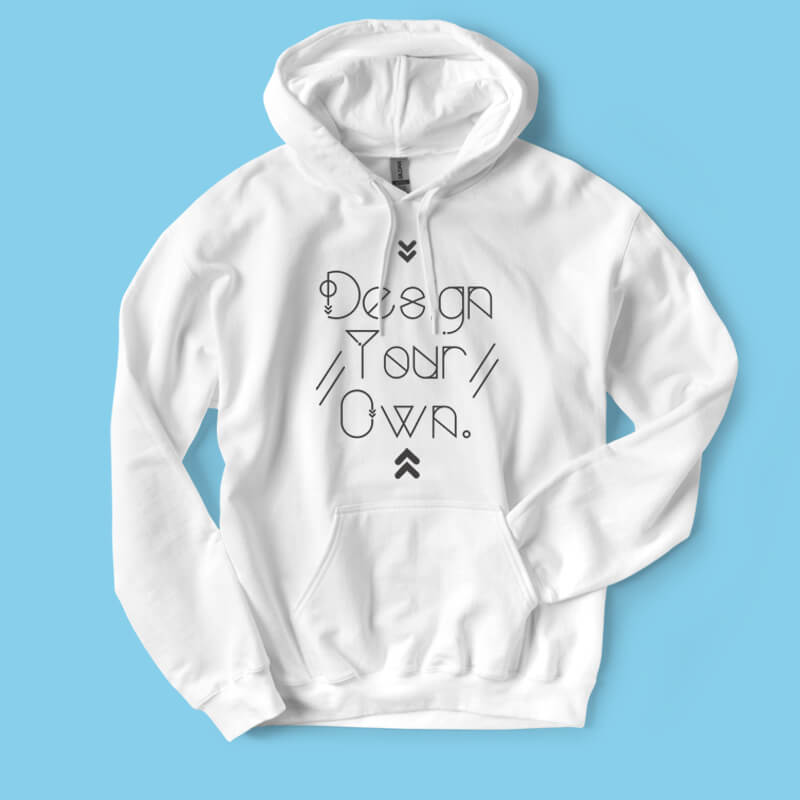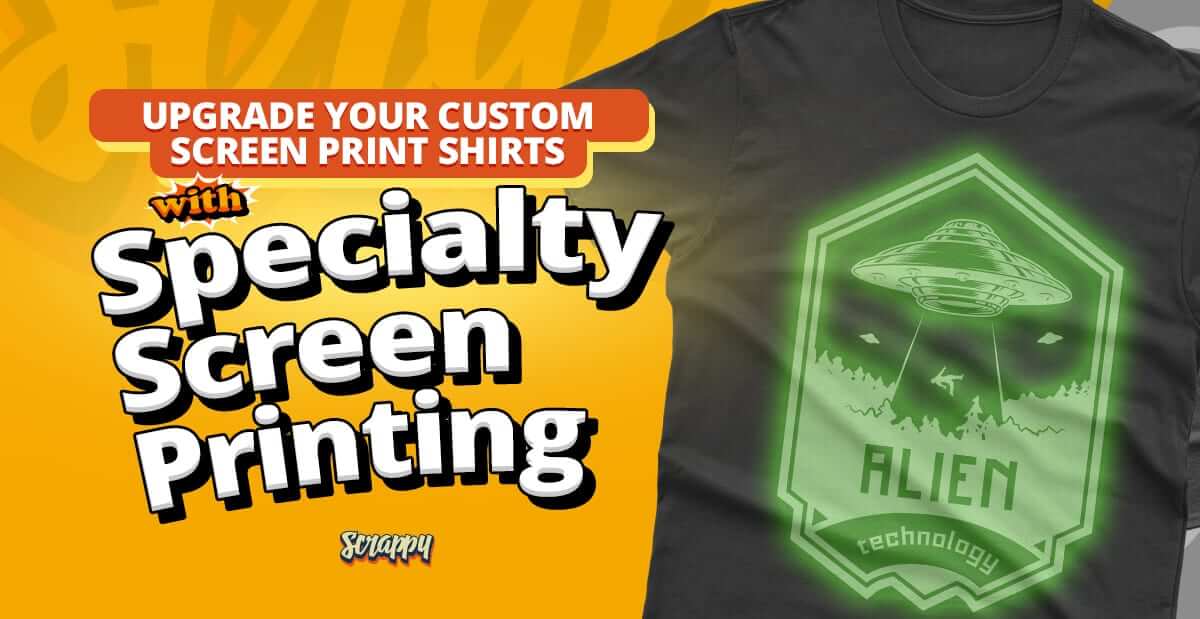Premium Screen Printing Kit for Business Startups
Wiki Article
Screen Printing Uncovered: Everything You Need to Understand About Tee and Garment Printing Techniques
Screen printing is an interesting method that integrates art with technique, using limitless opportunities for imagination. Ready to discover the crucial components that make display publishing an art form?
The Basics of Screen Printing: How It Works
When you dive into screen printing, you'll find it's both an art and a science. At its core, screen printing entails developing a pattern, or screen, that permits ink to go through only in specific areas (screen printing kit). You begin by choosing your design and preparing your screen with a light-sensitive emulsion. When you expose this emulsion to light, it solidifies, leaving your layout as a negative room.Setting the display over the textile, then make use of a squeegee to push ink with the display onto the garment. Each step is vital, and mastering them will elevate your screen printing abilities, changing straightforward garments into distinct, expressive pieces.
Sorts Of Display Printing Methods
When you grasp the essentials of display printing, it's time to check out the numerous strategies that can elevate your designs. One popular method is traditional screen printing, where ink is pressed via a stenciled display. This method is wonderful for vibrant, vivid colors. After that there's water-based ink printing, which supplies a softer feel and is environmentally friendly, yet it needs a different method to healing.Another option is plastisol printing, understood for its resilience and vivid shades, making it a preferred for lots of brands. Experiment with halftone printing to produce slope results and detailed layouts.
Important Equipment for Display Printing
To accomplish sensational cause screen printing, having the best equipment is fundamental. Initially, you'll require a tough display printing framework, which holds the mesh that moves your style onto the garment. Next off, purchase top quality squeegees; these are crucial for using ink equally throughout the screen. You'll additionally require an excellent exposure unit to create your screens, as well as a washout cubicle for cleansing them after use. A trusted heat resource, like a conveyor dryer or warmth press, is critical for healing your prints to ensure durability. Do not neglect an appropriate office, furnished with tables and storage space for your materials. Ultimately, safety equipment, such as handwear covers and masks, will certainly maintain you safe from chemicals and inks. With the right devices, you'll be well on your means to generating professional-quality prints.Selecting the Right Inks and Products
When selecting inks and materials for screen printing, you need to think about the kind of ink that functions ideal for your job. Think of fabric compatibility to assure your styles look great and last long. Discover environmentally friendly ink options to make your printing process more lasting.Kinds of Display Inks
Picking the right display ink is necessary for accomplishing vivid, durable prints that fulfill your job's demands. There are several kinds of screen inks to examine. Specialty inks, such as glow-in-the-dark or metallic, can include one-of-a-kind results to your designs.
Fabric Compatibility Factors To Consider
Understanding textile compatibility is crucial for achieving top notch screen prints, particularly considering that various materials react distinctively to numerous inks. Always examine your inks on sample material to guarantee they adhere effectively and preserve shade integrity. In addition, maintain in mind that fabric weight and appearance can affect the last end result, so choosing the appropriate ink and product combo is essential for your task's success.Eco-Friendly Ink Options
Environment-friendly inks are coming to be a preferred choice for screen printers that desire to minimize their environmental influence while maintaining high quality. When picking inks, consider water-based inks, which are much less harmful and easier to cleanse up compared to traditional solvents. These inks bond well with textiles, supplying lively results without harmful chemicals. You may additionally check out eco-solvent inks that utilize less unstable natural compounds (VOCs), making them a more secure choice for both your wellness and the planet.Furthermore, try to find inks made from eco-friendly sources, such as soy or vegetable-based options. By choosing the appropriate inks and products, you'll not just develop magnificent layouts yet also add to an extra lasting printing process. Make the button, and your prints will reflect your commitment to the atmosphere!
Preparing Your Style for Display Printing

File Layout Needs
To assure your design looks dynamic and sharp on material, you'll need to pay close interest to file layout needs for display printing. Beginning with vector documents like AI or EPS, as they can be scaled without shedding top quality. If you use raster photos, choose high-resolution documents, such as TIFF or PNG, ideally at 300 DPI. Avoid using JPEGs, as they can lose clearness when resized. Additionally, make sure your layout has a transparent background to stop unwanted white sides on your prints. Keep shade settings in mind; CMYK is typical for screen printing, so convert your RGB makes accordingly - screen printing kit. By complying with these guidelines, you'll set your art work up for a successful print.Color Separation Techniques
Shade splitting up is an important action in preparing your layout for screen printing, and mastering it can considerably improve your print high quality. You'll require to break your layout into individual shades, as each color calls for a different screen throughout printing. Begin by determining all the shades in your layout and produce layers each. You can utilize software like Adobe Photoshop or Illustrator to isolate and separate colors effectively. Be specific to conserve each layer as a different documents, commonly in a style like TIFF or PSD. This precision not just assures precise shade depiction but additionally simplifies the printing procedure. By focusing on color separation, you'll accomplish specialist and lively outcomes in your screen-printed garments.Resolution and Dimension
Accomplishing the finest results in screen printing begins with guaranteeing your style has the ideal resolution and dimension. Preferably, your art work ought to go to least 300 DPI (dots per inch) for sharp, clear prints. Your last item could look pixelated and less than professional. if you make use of reduced resolution.When it comes to dimension, think about the measurements of your print location. Design your artwork to match the last print dimension, preferably creating it in the actual dimensions you'll be publishing. In this manner, you'll stay clear of any kind of unexpected scaling problems.
Always inspect your style in both vector and raster layouts. Vector graphics can be scaled without shedding quality, making them excellent for display printing. Preparing correctly will ensure your layout looks outstanding on every garment!
Step-by-Step Display Printing Process
Display printing is a vibrant process that allows you to develop vivid designs on various surfaces. To obtain begun, you'll require a display, emulsion, and your chosen ink.Pour ink onto the screen and utilize a squeegee to push the ink through the stencil onto the fabric. Lift the display carefully and let the print completely dry. You've efficiently display published your style.
Tips for Effective Screen Printing Projects
While you're diving into your display printing jobs, bear in mind that preparation is essential to success. Start by collecting all your products-- inks, displays, garments, and squeegees. A tidy office aids prevent undesirable mistakes, so clean up prior to you begin.Next, confirm your artwork is high-resolution and correctly sized for your garment. Examine your display for correct exposure and clean it extensively to stay clear of spots. When blending your inks, follow the manufacturer's guidelines to attain the appropriate uniformity.
During printing, apply also stress with your squeegee for constant outcomes. Don't hurry; take your time to validate each print fulfills your criteria. After printing, let your garments completely dry entirely before taking care of or packaging them.
Last but not least, always maintain an example of your benefit future reference. This means, you can assess your progress and enhance your methods over time. Pleased printing!

Often Asked Concerns
For how long Does It Take to Establish a Display Printing Work?
Establishing up a screen printing job normally takes around half an hour to an hour. You'll prepare the screens, mix inks, and change the press. The moment varies based on intricacy and experience, so remain arranged!Can I Print on Different Material Keys In Using the Exact Same Strategy?
Yes, you can print on different textile kinds utilizing the very same strategy, however you'll require to adjust your setups and inks. Some textiles take in ink in a different way, so exploring assurances the finest outcomes for each and every material.What Are Common Mistakes to Stay Clear Of in Display Printing?
When display printing, stay clear of usual blunders like using the incorrect ink, neglecting correct direct exposure times, or skipping pre-press checks. Always test your arrangement and preserve tidy screens to assure quality outcomes each time.How Can I Effectively Clean and Keep My Screen Printing Tools?
To correctly tidy and preserve your display printing equipment, you should frequently wash displays with ideal solvents, examine mops for wear, and guarantee all tools are saved dust-free and dry. Consistency improves and stops pricey repair work performance.Is Screen Printing Eco-friendly Contrasted to Various Other Methods?
Screen printing can be a lot more ecologically friendly than various other methods, especially if you make use of water-based inks and eco-conscious products. By choosing lasting products and methods, you minimize waste and reduce your influence on the planet.Screen Printing Uncovered: Whatever You Need to Know Concerning Tee and Garment Printing Techniques
At its core, screen printing includes producing a stencil, or display, that permits ink to pass via just in specific areas. Position the screen over the material, after that use a squeegee to press ink via the display onto the garment. One popular method is conventional screen printing, where ink is pushed through a stenciled screen.When selecting inks and materials for screen printing, you need to take right into account the kind of ink that works finest for your job.
Report this wiki page